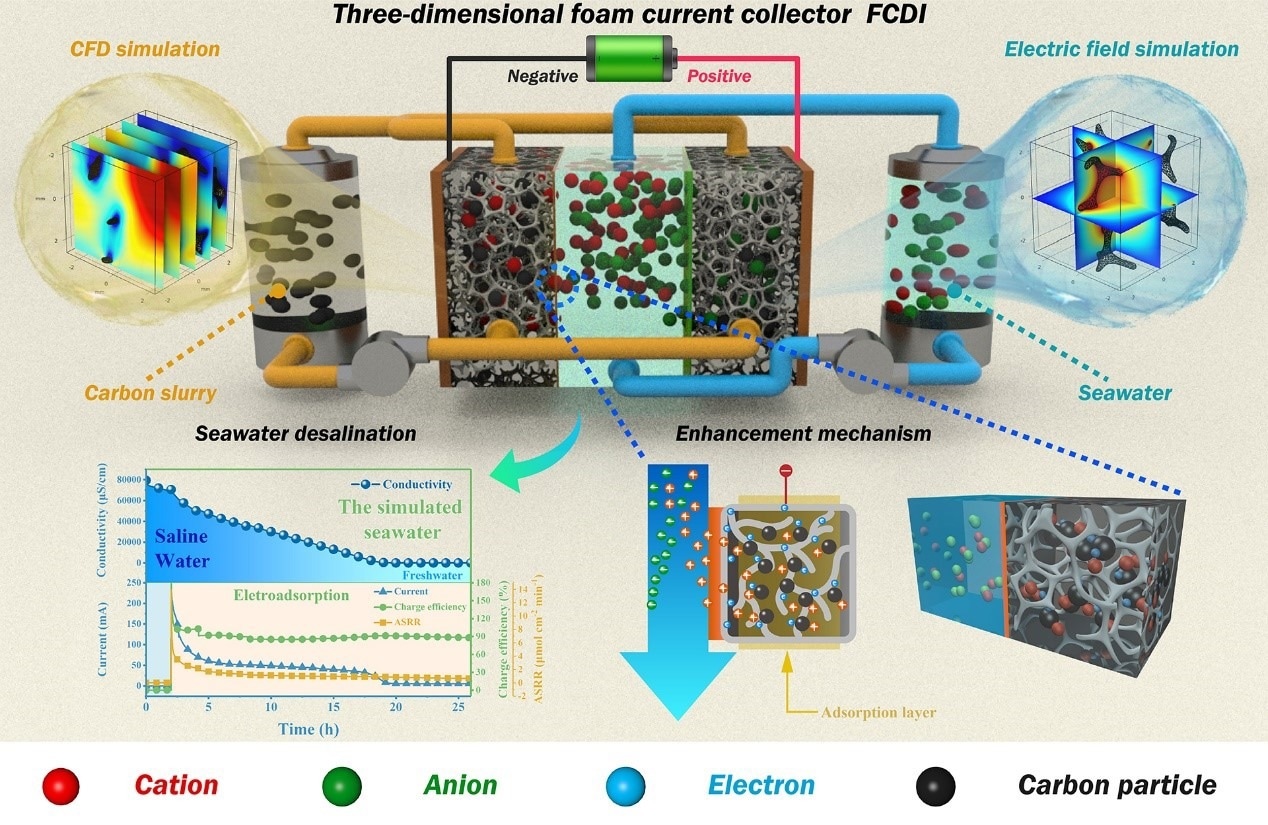At the Hefei Institutes of Physical Science (HFIPS) of the Chinese Academy of Sciences, a research team has come up with a flow-electrode capacitive desalination technology along with a three-dimensional (3D) foam current collector for real seawater desalination.
 Schematic diagrams of flow-electrode capacitive desalination utilizing three-dimensional foam current collector for real seawater desalination. Image Credit: Hongjian Zhou.
Schematic diagrams of flow-electrode capacitive desalination utilizing three-dimensional foam current collector for real seawater desalination. Image Credit: Hongjian Zhou.
The study outcomes were reported in the Water Research journal.
The method of flow electrode capacitive desalination (FCDI) is a novel water treatment technology that has gained huge attraction for seawater desalination. An unsatisfied salt removal rate and low charge transfer capacity have been experienced by conventional FCDI devices. Hence, using new current collectors to enhance the electric field distribution and charge transfer capacity of FCDI devices is an immediate requirement.
The 3D electric method has been known as an efficient solution to amplify the charge transfer ability of FCDI devices for saline water treatment. It helps in increasing the surface-to-body ratio of the flow-electrode chambers, which could greatly encourage the electric field distribution and charge transfer area.
In this study, the scientists suggested a 3D carbon-coated nickel foam to substitute graphite plate and titanium mesh as a novel current collector for the improvement of desalination performance in FCDI devices.
The 3D foam current collector serves as a charged conductor. The intrinsic 3D interconnected open-pore structure was utilized as a flow channel to extend the charge transfer area and electric field distribution between the carbon slurry and the current collector.
The scientists simulated the flow field and electric field of carbon slurry in various pore sizes of 3D foam and 2D titanium mesh models in the computational fluid dynamics simulations and 3D electric field.
The researchers discovered that the charge transfer area of the 3D foam current collector was comparatively bigger compared to that of the 2D planar current collector, allowing more activated carbon particles to be charged in an effective manner. Also, it enhanced the desalination performance of FCDI and charge transfer capacity.
Electrochemical measurements also displayed a considerable decrease in the charge transfer resistance, and hence the electrochemically active surface of the 3D foam current collector was expanded. Good efficiency of salt removal was displayed.
This new 3D foam-structured current collector offers a new strategy to improve the charge transfer capability and entire desalination efficiency of FCDI devices for seawater desalinization.
Journal Reference:
Zhang, X., et al. (2022) Flow-electrode capacitive deionization utilizing three-dimensional foam current collector for real seawater desalination. Water Research. doi.org/10.1016/j.watres.2022.118642